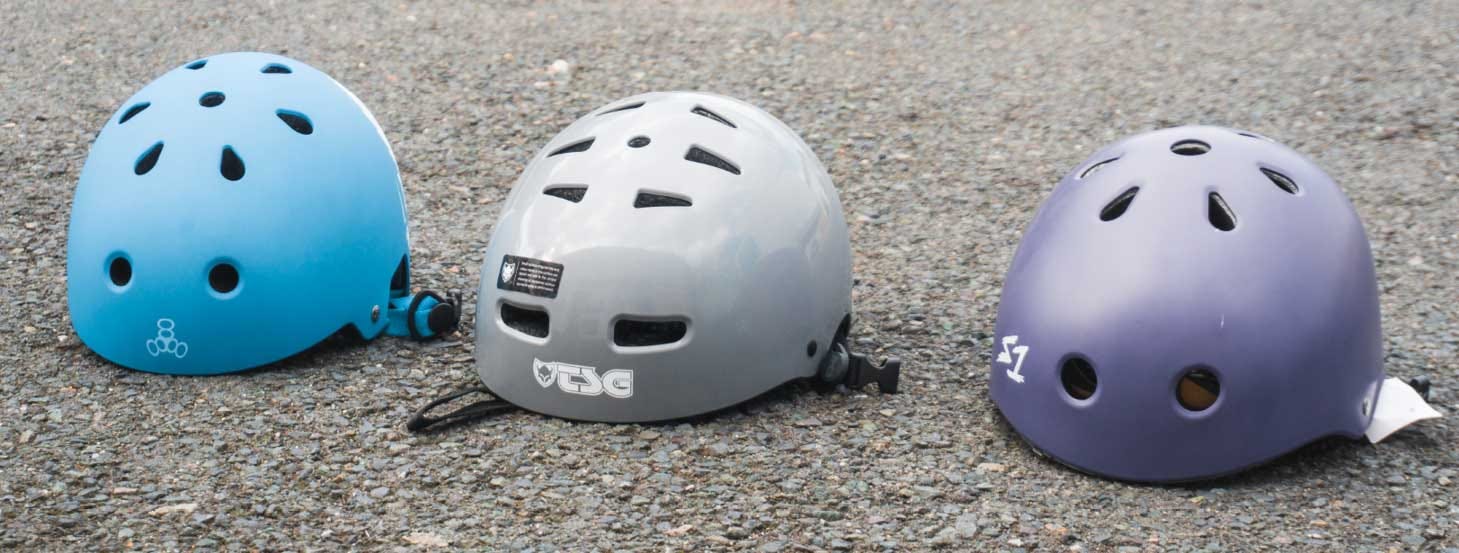BMX Helmet Buying Guide Points [2022 Guide]
Riding a BMX can be seriously demanding from the speed of BMX racing to the thrill of learning new tricks whilst tearing around Skate Ramps and bowls. An important part of the learning process no matter what skill level you are at is that falling is to be expected in order to develop. Whilst many of these slams you’ll immediately get up from and dust yourself off there is always the chance that without proper head protection a fall can cause quite a serious injury. In this friendly guide, we are going to go through how to buy the best BMX Helmet for you from the thousands of models on the market.
Why is a good helmet fit essential?
Whilst wearing a Helmet can prevent a serious injury, wearing an ill-fitting helmet or not properly securing the helmet can cause just as dangerous as not wearing anything at all. Helmets that are far too big for the wearer’s head are more likely to slide back during a fall providing no protection to vulnerable areas of the head.
How a helmet should fit
A good helmet fit is easy to determine first by measuring your head circumferance approximately an inch above your eyebrows. When the helmet is worn the padding should rest comfortably without causing tension on the temples and the helmet should not be able to slide side to side or front to back. Some helmets come with two sizes of helmet liner padding so if you find that you are in between sizes you can use the front liner of one size and the back liner of a small size to achieve a custom fit to your helmet.

Construction
One of the first things to check when buying a helmet is that it is compliant with the BSI and European safety standards and printed on both the packaging and inside the helmet should be the BSI or CE logos to demonstrate that the helmet meets these standards. Commonly many BMX Bike helmets are made from a moulded EPS (Expanded polystyrene) inside of an exterior hard plastic shell. The polystyrene upon receiving a heavy impact will compress and crack which transfers the force of the impact away from the head and skull. Inside of the helmet you’ll normally find foam liners that can be taken out and changed both for sizing and hygiene so the liners can be cleaned.
Protection
Further from the standard protection that a BMX helmet should provide, there are many innovations that can allow for further protection with popular options, including MIPS or D30.
MIPS stands for Multi-directional Impact Protection System and consists of a low friction inner shell to the helmet which has the ability to rotate inside the helmet allowing an impact to be distributed over a larger surface area instead of a blunt impact at the point of contact.
D30 is a rubbery like material which is light and thin but upon taking an impact the molecules restrict packing tight to give amazing protection and then after the impact has dissipated the D30 returns back to it’s rubbery state again. D30 is quite commonly used in BMX, MTB, Motocross and Ice Hockey helmets due to it’s ability to absorb impacts taken at high speed.
There are other protection systems on the market so look into which one will best suit your budget but always remember you only get one brain and it’s definitely worth protecting.

What is the lifespan of a helmet?
All helmets have a lifespan which is something that doesn’t get spoken about enough, but the materials in the foam will begin to break down over time and it is recommended that you should change your helmet approximately every three to five years or after an impact whilst wearing it. The reason you should change your helmet after an impact is that once the helmet has been impacted the foam will have compressed and possibly internally split even though the outer hard shell may look perfectly fine. In the event of another impact in the same location the helmet would fail to provide the same level of protection leading to a serious injury.
Ventilation
Admittedly thinking about the vents or the number of vents on a helmet is hardly something many buyers factor into purchasing their next helmet. However, vents are a key important part of your helmet as they allow channels of air to pass over your scalp keeping you cool especially when you are exerting yourself when riding. The head is one of the major points of the body to accumulate body heat so keeping it cool when riding ensures that you can keep riding for longer periods of time. So depending on how hot you get when you ride, check out how many vents you have on your current helmet and look for helmet styles with better vent options in either open or full-face helmets.
Half-Shell vs Full-Face
When it comes to absolute protection, you can’t go wrong with a full-face helmet. It will cover your entire head and face to keep you fully protected from all-sorts of falls and crashes. Full-face helmets, however, do tend to be more expensive than half-shell helmets and can also restrict your visibility range too. Conversely, not only are half-shell helmets cheaper, with no restrictions on visibility, but they also allow for plenty of ventilation to keep you feeling cool and fresh too! Half-shell helmets tend to be better suited for casual riding as they are fairly lightweight and easier to put on and take off. Although they may not be as comfortable or lightweight, full-face helmets are particularly ideal for the hardcore, serious BMX riders who are looking to tear through the wind at high speeds.
Shop our entire range of Helmets at Skatehut today.

